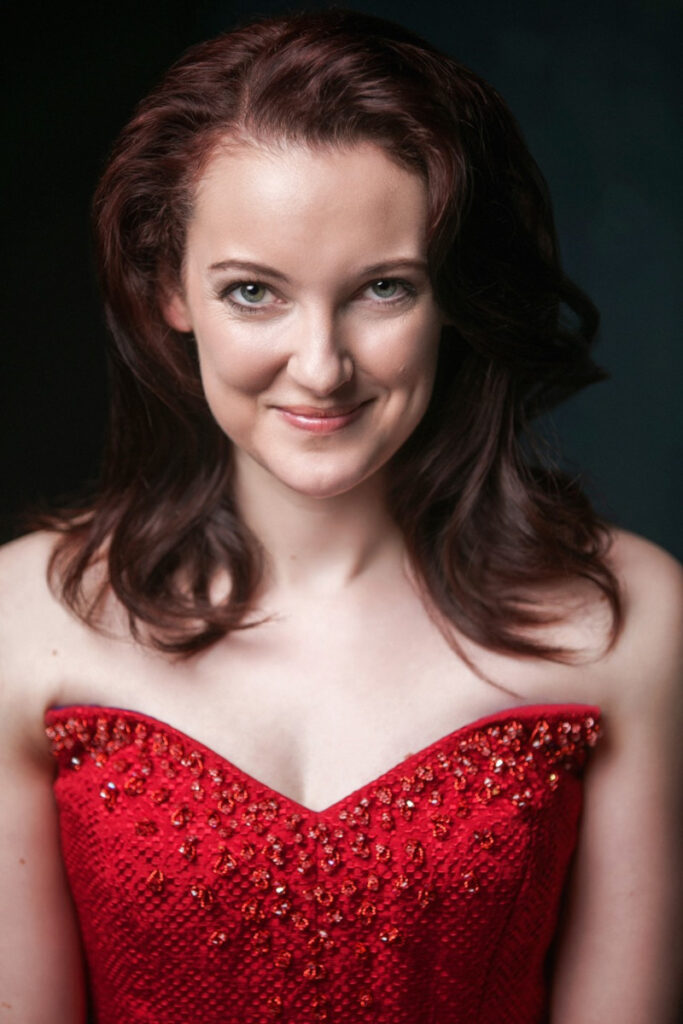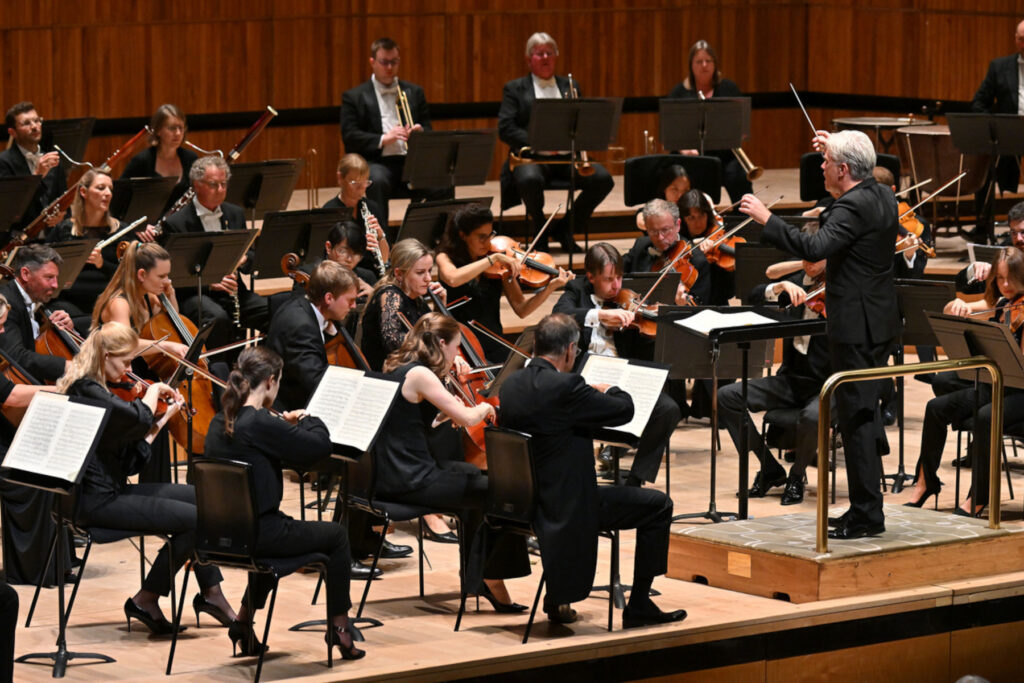Music encompasses many different kinds of storytelling, with and without overt narration. In the world of fictional narratives, there are often heroes or victors, villains or antagonists, stereotypical characters, and familiar settings. In musical terms, this becomes most evident in tone poems of the 19th century, exemplified by something like Richard Strauss’s Ein Heldenleben. Most powerful of all is when there is a text to underpin the musical message. As was the case with the opening work in this programme performed by the London Philharmonic Orchestra, Edward Gardner conducting, with Jennifer France as soloist.
It takes a special kind of inventiveness to take 481 words from the text of Shakespeare’s Hamlet, the words actually spoken by Ophelia, and weave them into a completely different text in which those words take on quite different meanings. That, in essence, is what the British librettist Paul Griffiths did in his novella let me tell you and what the Danish composer Hans Abrahamsen then translated into a song cycle. This whole fabric is fascinating in itself because it is part of modern cultural history. Griffiths is a member of OULIPO (from the French Ouvroir de literature potentielle), whose founder Raymond Queneau described Oulipians as “rats who construct the labyrinth from which they plan to escape”. In turn, what Griffiths and Abrahamsen do is an example of the play element in culture and society, the quality of homo ludens which we as human beings all have.

The cycle consists of seven sections, which together form three parts relating to the past, the present and the future. Ophelia’s backstory is told entirely from her own perspective in a kind of stream of consciousness. In doing so the listener uncovers through her interior monologue the varying layers of her emotional state of mind, encompassing love, hope, memory, emptiness, desperation, and madness. The work represents an immense vocal challenge for the soloist, involving dazzling leaps, exposed pianissimo high notes, coloratura runs, and long legato passages requiring sureness of pitch. Abrahamsen also makes use of stile concitato, repeated note emphases within individual syllables, a technique which harks back to Monteverdi. Jennifer France coped valiantly with all these demands, though I never quite felt a complete identification with the music, manifest in the way her eyes were often focused on the score in front of her.
In describing the piece to Gardner, the composer himself, present for this performance, stated that “The music must sound as if it is wounded”. That is where its extraordinary emotional appeal lies. Though he writes for a large orchestra, Abrahamsen uses it very sparingly, creating instead a shimmering soundscape of textures in which pain, both acute and deadened, is uppermost. Some of the effects are masterly, such as the plucked double basses and bassoons sculpting a ghostly introduction to the third song, “There was a time, I remember”. Or where in the central section, “Let me tell you how it is”, microtonal strings suddenly coalesce into a mushroom of sound for “You have sun-blasted me”. The LPO players were highly responsive to these constantly shifting moods, producing at the start of the sixth and shortest song, “I know you are there”, ruminative and unsettling impressions from the lower strings, the high-lying cellos duetting with the eeriness of soft trombones. Celesta, piccolos and flute traced the path of gently falling snow as the narrator moved into the final plane of pure conjecture about the future, her steadfastness captured in the words “I will go on”, followed by Mahlerian wisps from the violas at the morendo close.

A different kind of narration is required for Mahler’s Fourth Symphony. This is the search of a childlike mind through experience in pursuit of regaining lost innocence, as if Mahler had been reflecting William Blake’s Songs of Innocence and Experience. At the start of the first movement, which the composer marks “Deliberate. Don’t hurry”, it was almost as though Gardner had wanted to dispel the sadness of the preceding song cycle with the boisterous jauntiness of a child’s nursery, the sleighbells repeatedly highlighted. At this speed, my inner voice felt like crying out, “Please sir, can you say that again, I couldn’t quite follow”. Most storytelling needs to unfold; this was driven on with a frequent sense of dizzying momentum.
Mahler originally authorised, but later withdrew, the title of “Totentanz” for the second movement Scherzo. Here, Death is seen as the seducer, the scordatura marking for the solo violin a reference to the mistuned fiddle in the guise of a skeleton. Pieter Schoeman was a quite wonderful narrator, insinuating himself into the minds of trusting listeners, rather like the Pied Piper of Hamlin does. As so often, it was the appearance of the skull beneath the skin, a reminder of momento mori, that creates a necessary chill, part of the intentional irony which Mahler weaves into his plot. This picks up on those early sleighbells, which have little to do with a child’s sleigh gliding through the snow but much more, as the composer made clear, with the court jester’s cap. In this movement, where again the instructions to the conductor leave no room for doubt (“At a leisurely pace. Without haste”), I again wished for less acceleration. In Gardner’s hands it all sounded like a very busy town square on market day, pre-echoes of Stravinsky’s Shrovetide Fair unmistakable, with the hustle and bustle dominating proceedings. Gardner was much better at capturing typical Mahlerian sonorities: rustic tones from horns (impressive throughout this performance), clarinets and bassoons, for instance, and instrumental details frequently jumped out at you with a laser-like intensity. It was only after the harp issued in an anticipation of what has been called the “heavenly music” of the Finale that I first became aware in this performance of the aching nostalgia that is a constant companion to this work, childhood remembered through the prism of adult experience.
In the great central Adagio movement, Mahler’s initial explanatory programme, later discarded, is instructive at this point. “Die Welt ohne Schwere” (= The world without gravity” is what he called it. Gardner’s tendency towards micromanaging was somewhat at odds with the need for unruffled serenity, the ability to float above the earthly fray. When the conductor just lets the musicians play, rather than constantly adjusting the dials, the results are much more satisfying. That notwithstanding, the opening melody was voiced very poetically by violas and cellos, accompanied by precise pizzicatos from the double basses; there was a wonderfully sweet-toned oboe and later admirable blend of all the woodwind soloists; and in the titanic timpani contribution together with piercing trumpets contained in the full-throated orchestral climax towards the close further evidence of Gardner’s ear for Mahlerian sonorities.
Leonard Bernstein once used a boy treble as soloist for the concluding movement. One might quibble about whether or not such a voice can command the emotional variants present in the solo, but again the composer’s instructions are perfectly clear: “mit kindlich heiterem Ausdruck” (= with childlike cheerful expression) is what he wants. France had the right fresh-toned quality and a directness which made the listener perk up and pay attention to what was being narrated. Unfortunately, there was a note of sharpness in the voice which often intruded, and occasionally an emphasis on articulating the notes rather than colouring the individual words that mitigated against a totally satisfying result. At the start of the penultimate stanza, however, France had a sparkle in her eye and a smile playing on her lips for the lines “There is no music on earth that can be compared to ours”, the strings ever so slightly accentuating some sighs of regret, yet a further instance of how irony informs this entire work.
Individual recollections may vary is what, in a different context, the late Queen Elizabeth II once referred to. Even narrators do not always follow an unwritten assumption that they must be telling the truth. The element of ambiguity, woven into Abrahamsen’s fine contemporary work, and Mahler’s creation from a bygone age, is an example of how the achievement of absolute objective certainty must remain a forlorn quest.
Alexander Hall
Hans Abrahamsen, let me tell you – Mahler Symphony No 4 in G major
Jennifer France (soprano) – London Philharmonic Orchestra, Edward Gardner (conductor)
Royal Festival Hall, Southbank Centre London, 3 October 2025
Top image by Mark Allan